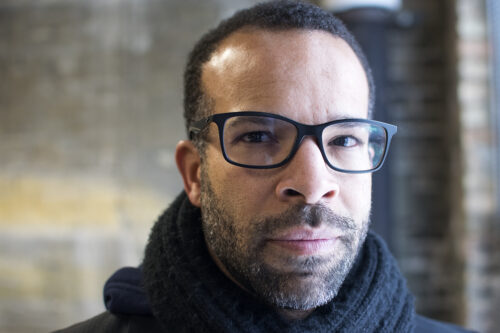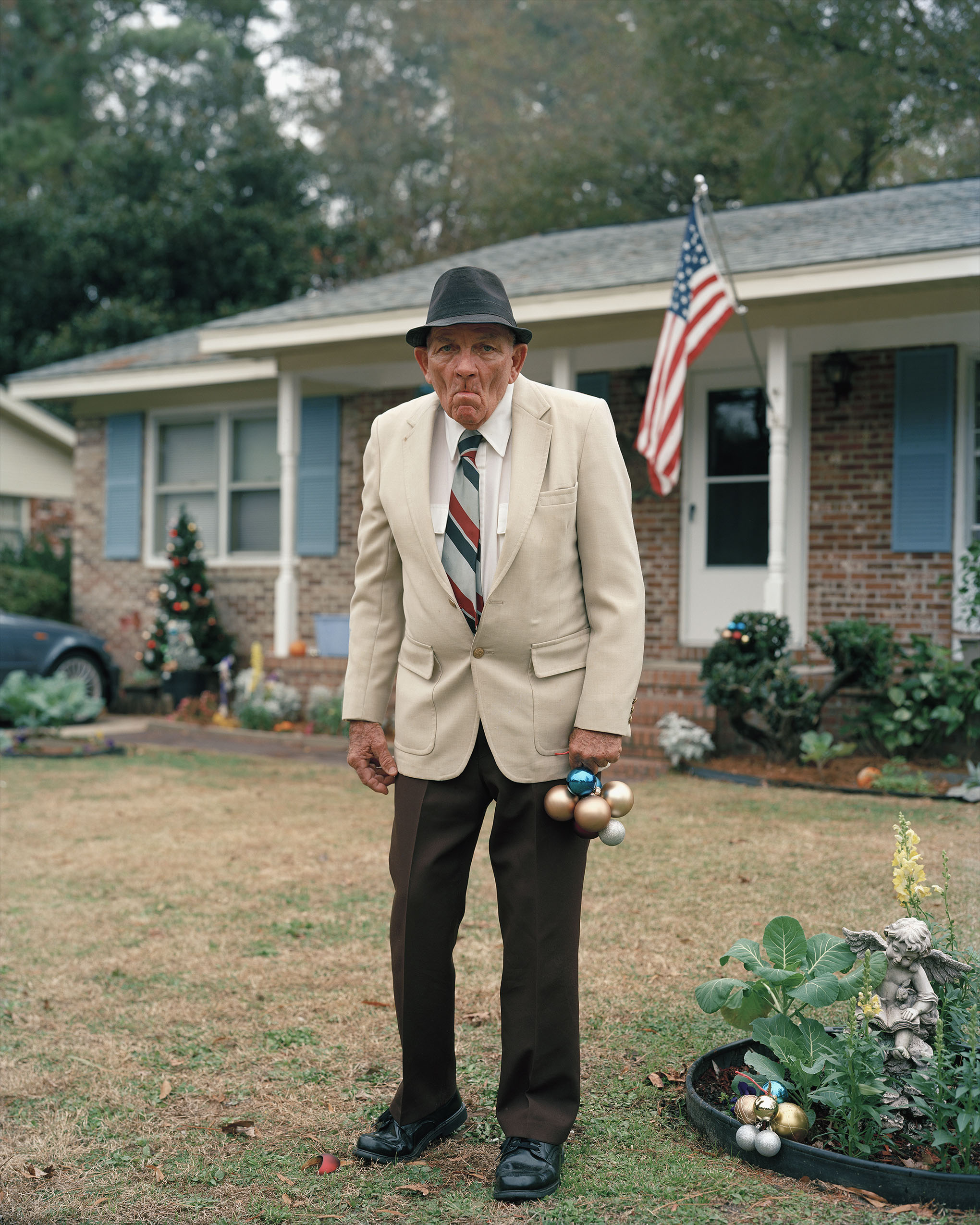Interview with Douglas Kearney, the 2024 Elliston Poet
7 Minutes Read Time

Managing Editor Lisa Ampleman: Thanks to the bequest of poet and philanthropist George Elliston, each year a distinguished poet visits the University of Cincinnati “to give public lectures and readings, while conducting seminars and workshops with graduate writers,” as a page detailing the history of the residency describes. This year, the Elliston Poet-in-Residence is Douglas Kearney, whose work I’ve admired for more than ten years. I’m looking forward to his lecture and reading later this week (see below for details), and I was glad to have the opportunity to ask him a few questions in advance of his visit:
I think of you in the vanguard of the recent resurgence in visual poetry: to be specific, we’ve seen a rise of visual submissions to the magazine in the past five years, but your work in the September 2014 issue of Poetry magazine felt like a rallying call back then. You describe the philosophy behind your methods in “You Better Hush: Blacktracking a Visual Poetics,” which I think should be recommended reading/listening for anyone interested in typographically experimental poetry. I’m interested, too, in the practicalities: how do you teach visual poetics or give feedback on visual poetry?
Thank you for your kind observations! Also: that’s a great question. I think a lot about my friend, the brilliant Tisa Bryant. She used to teach a course about emergent forms of writing, and she came to the conclusion that workshopping a “new” form is complicated because people tend to base their critiques on how closely the new thing resembles extant, familiar work. This doesn’t do the emergent work any favors as it isn’t those familiar forms and frequently constitutes something of a departure. Of course, visual poetry is often intentionally part of any number of traditions, so it’s not always novel. But I enter most pedagogical situations prepared to come up short for terms of analysis.
In my own praxis, I work hard to not let design act as a kind of steroid for an idea that doesn’t have much dynamism. If I don’t think about that, I’m concerned that I might do the typographical equivalent of writing a mid poem but disguising that by performing it beautifully.
Visual arts—often graphic design—give us concepts with which to see how a visual poem functions as a compositional field. Comix storytelling over sequential panels has useful models of discourse. I use Christian Leborg’s Visual Grammar (Princeton Architectural Press, 2006) in courses from poetry to theater. Styles ranging from minimalism to vernacular maximalism give us points of entry even if they don’t provide the entire house. I inquire as to why a poet has chosen a particular visual strategy as a way of coming to shared terms re: their ambitions, and I am aware that for many, the technical skills of working with unfamiliar processes and software create barriers (and boons) to their desired outcomes. So, we sometimes have to read a draft as a proof of concept that shows us what we’ll need more than what we have.
I think about legibility, not as an ideal, but as a way of putting pressure on what is apparent or immediately available to a reader. Sometimes the snarl of overlapping words tells the reader precisely what the poet wants them to know with more intensity than a sentence might.
Color adds new possibilities and complexities to a visual poem. Decisions around whether a visual poem will include illustrations or only typography changes the tension on what organizes the composition—as in opera, an aria is distinct from a recitatif even as they’re both sung. How does the image of a bird work differently than a collaged typescript of the word bird? I can show up with certain opinions, ideas, and understandings, but ultimately, I want to understand the poet’s concepts in order to engage how far their work goes toward activating, acting out, or engaging those concepts.
A different question on pedagogy, more widely: You’ve taught in graduate programs in writing, including at the University of Minnesota. What advice do you give your undergraduate and graduate students about graduate programs?
Ah! Don’t pick a place strictly because there’s a faculty member you admire. People leave jobs, go on sabbaticals, take on administrative posts that reduce their teaching and time—so that basket isn’t great for all the eggs. I tend to suggest people find a program in an institution with access to resources that really excite them or that has an aesthetic or cultural point of view that feels generative to them. There are schools that, say, talk about interdisciplinarity, but until you ask current students, you won’t get a sense of how accessible courses in other disciplines will actually be. So definitely ask to speak to current students. I also encourage students I advise to be honest about their ambitions, at least to themselves. You should have a clear sense of what you want as a means of helping determine where you might go.
What kinds of things have been feeding your creative side lately (books, TV, film, natural spaces, people, etc.)?
—Hmmm. I love hearing about the thought processes of artists who aren’t primarily focused on writing. So podcasts like Helga or a book series like 33 1/3 or BFI Film Classics or magazines like Wax Poetics are clutch. I talk a lot with colleagues in other disciplines looking for overlap and contrast. I love music and often think of how to synthesize production techniques or genres into modes of poetic reproductions. Lately, I think of an essay about the lorelei lure of lyric poetry—I heard the incredible Dr. Evie Shockley read it at MLA back in 2023. It was some shots-fired stuff. I think about that a lot in many of the dozen-odd poems I’ve written recently. It was a provocation and an inquiry; it made me uncomfortable, so I keep pressing the bruise.
Douglas Kearney will have two events for his Elliston Poet residency this week, both in the Elliston Poetry Room (646) in Langsam Library room:
- a lecture, “Playing the Changing Same,” on Tuesday, April 2, at 5:30 p.m.
- a reading of his poetry on Thursday, April 4, at 6 p.m.
Douglas Kearney has published seven collections, including Optic Subwoof (Wave Books, 2022); the 2022 Griffin Poetry Prize-winning Sho (Wave Books, 2021); and Buck Studies (Fence Books, 2016), winner of the Theodore Roethke Memorial Poetry Award, the CLMP Firecracker Award for Poetry, and California Book Award silver medalist (Poetry). M. NourbeSe Philip calls Kearney’s collection of libretti, Someone Took They Tongues (2016), “a seismic, polyphonic mash-up.” Kearney is the 2021 recipient of OPERA America’s Campbell Opera Librettist Prize, created and generously funded by librettist/lyricist Mark Campbell. His operas include Sucktion, Mordake, Crescent City, Sweet Land (the Music Critics of North America’s Best Opera of 2021), and Comet / Poppea, commissioned by AMOC (American Modern Opera Company). He has received a Whiting Award, a Foundation for Contemporary Arts Cy Twombly Award for Poetry, residencies/fellowships from Cave Canem, the Robert Rauschenberg Foundation, and others. Born in Brooklyn and raised in Altadena, California, Kearney teaches creative writing at the University of Minnesota–Twin Cities and lives in Saint Paul with his family.
